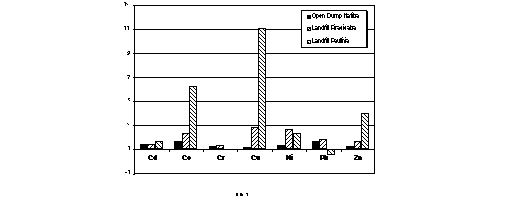
The Piracicaba region is one of the fastest growing areas in the state of São Paulo, having expanded even more than the state capital and the municipalities surrounding the metropolitan area. Today about 2.9 million people live in this region, increasing to approximately more than 3 million in 2000. Industrial development in the region has lured people to large urban centers, like Campinas and Piracicaba. The waste produced in these cities is dumped into sanitary landfills or illegal waste deposits.
The landfills of Piracicaba and Paulínia were used for about 10 years as open dump sites. Then several remedial actions were implemented, e.g., collecting some of the leachate in drainage pits. In Piracicaba, a leachate recirculation system was also installed. However, all these three sites do not have a impermeable technical barrier and the geological basis is characterized by permeability coefficient between 10-7 to 10-9 m/s.
Soil samples were collected by manual drilling in the vicinity of the waste deposits below and above the groundwater table. Samples representing the background were taken upstream at places being not influenced by the waste deposits.
The samples were dried at 40šC and the grain-size fraction < 63 mm was separated and analysed for Co, Cr, Cu, Ni and Zn by ICP-OES and for Cd and Pb by AAS.
To estimate the pollution from the landfills, an accumulation factor was calculated by dividing average values of
downstream samples by the maximum value of the background. Factors for some heavy metals are shown in the diagram.
All the three dumping sites cleary contaminate the soils downstream with heavy metals. In spite of the remedial actions of the landfills Paulínia and Piracicaba, the heavy metal enrichment at both sites is much higher than that of the open dump of Itatiba. This can be explained by the lower amount of clay minerals in the soil and the acid groundwater of Itatiba.
The heavy metals are easily mobilized by the groundwater, as is demonstrated by electrical conductivity and pH values: Itatiba 4060 mS/cm and 6.07, Piracicaba 3060 mS/cm and 7.08, and Paulínia 2180 mS/cm and 8.61 respectively.
Fig. 1: